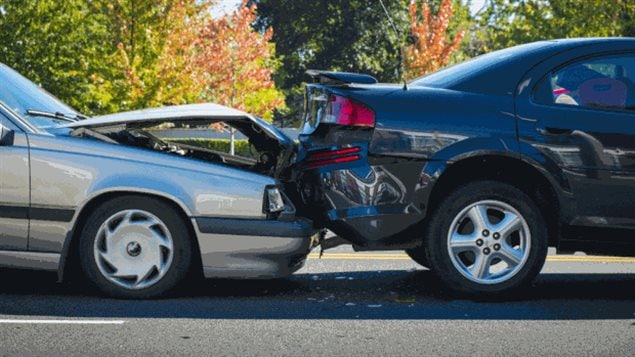In legal terms they’re called “induced collisions”
You’re driving along, when a car passes you, pulls quickly in front and brakes hard. You can’t avoid hitting the back of the other car. Suddenly, the full load of passengers comes out crying “whiplash”.
Coalition against insurance fraud: examples of staged accidents
In Canada, rear-end collisions of this type are typically blamed on the car which ran into the back of the other. However, a “convenient” bystander might also come forward as a witness to point out you’re at fault. A tow truck also conveniently pulls up to haul away your damaged car to a (their) repair shop.
These are all aspects of a staged traffic accident.
Insurance companies are saying that it has become a sophisticated racket of fraud.
Canada’s public health can be hit because in some cases, owners or employees of medical clinics or rehab facilities are involved in the fraud rings.
They forge the signatures of real doctors or chiropractors, without their knowledge, to cash in on the resulting treatments for the faked whiplash and soft-tissue claims that result from the staged collisions.
Possible (but unsophisticated) scam foiled by dash cam: Hamilton
The scammers tow trucks and repair shops benefit through inflated costs. And the health and auto insurance companies suffer big losses.
And of course there is the deductible payout the innocent victim must pay for his car damage, increased insurance premiums, and not to mention the potential very real risk of injury themselves.
All these costs are eventually passed on to all consumers.
National Insurance Crime Bureau; left turn fraud (intersection or mall entrance)
Rick Dubin, is vice-president of the Insurance Bureau of Canada’s investigative services and leads a team of 50 investigators looking into organized auto insurance crime.
He says Toronto, Canada’s largest urban centre, is the “staged collision capital” of the country.
Aviva Canada, and State Farm Insurance, both say they don’t monitor the problem here, while other companies won’t reveal statistics.
However, a 2012 report by KPMG estimated that fraud costs auto insurers in Ontario alone over $1.5 million, with some 18% of claims being fraudulent.
The staged accidents usually occur at relatively low speeds and often the scammers car is an older model. The car may also have several occupants both as “witnesses” and to increase the alleged whiplash or soft tissue injury claims.
Worldwide phenomenon
Last month Britain’s largest insurer, Aviva, said the number of “induced collisions” rose by 51% in 2013.
A German site (autoblog) in early 2013 said insurance companies there estimate 10% of traffic accidents are staged. On the site of the German legal firm Kremer, Hoeck & Koll, an article puts the fraud damage estimate at 4-billion Euros annually!
In the United States, the FBI says staged traffic accidents cost insurers 20 billion dollars a year, The Los Angeles Times reports a new wrinkle of young men on bicycles throwing themselves in front of cars. They may actually get hit, but only mildly, and then demand cash from the driver who is usually eager to pay one or two hundred dollars to get out of the situation and avoid legal hassles.
In Russia due to widespread fraudulent claims, and other driving incidents, dash cameras have become almost universal.
In China, staged accidents often involving pedestrians and cars, or bicycles and cars is common, and there are many seen on YouTube







For reasons beyond our control, and for an undetermined period of time, our comment section is now closed. However, our social networks remain open to your contributions.